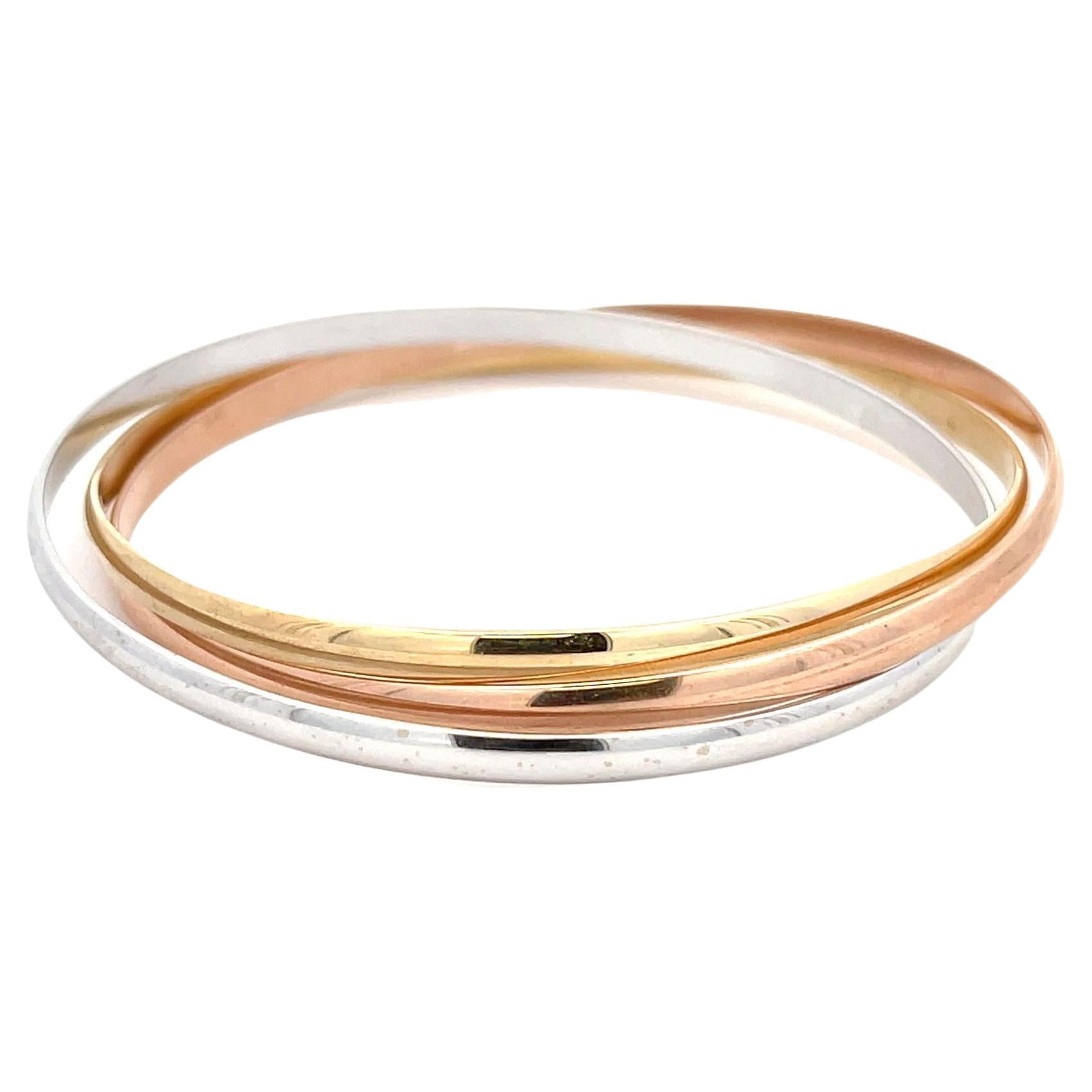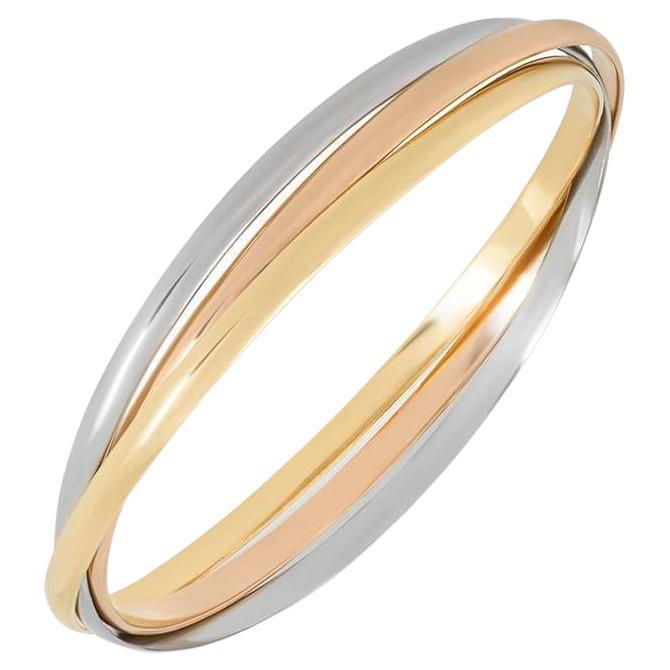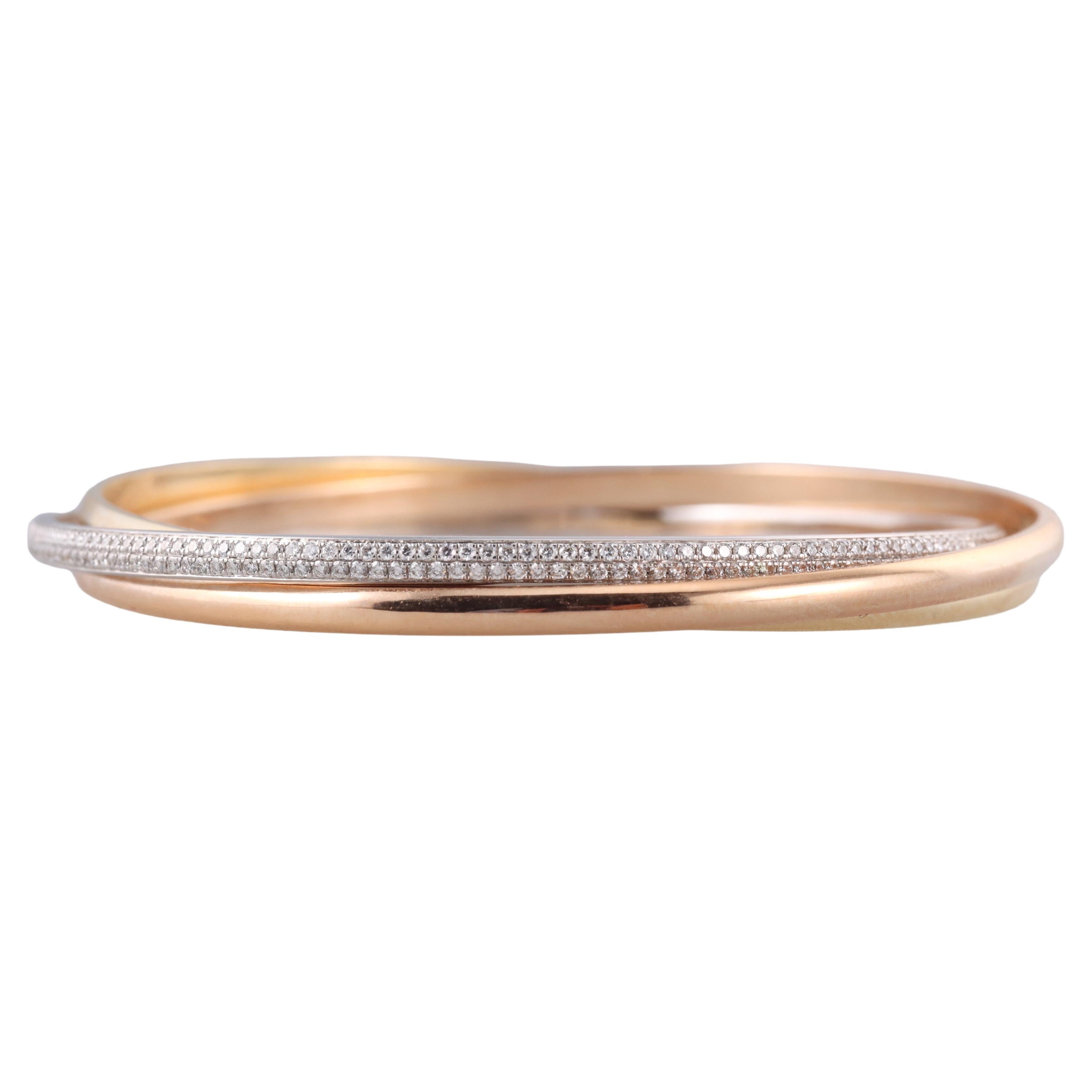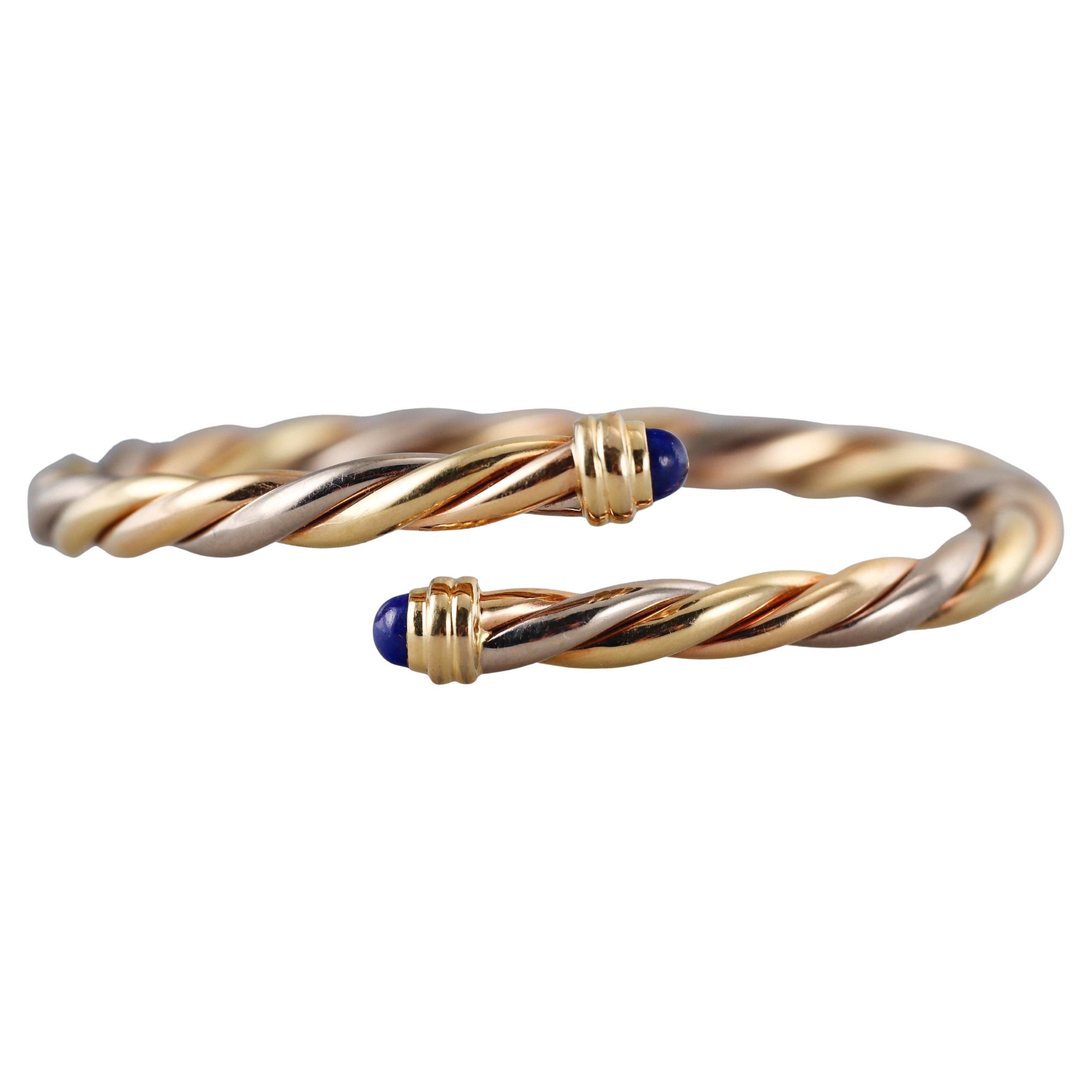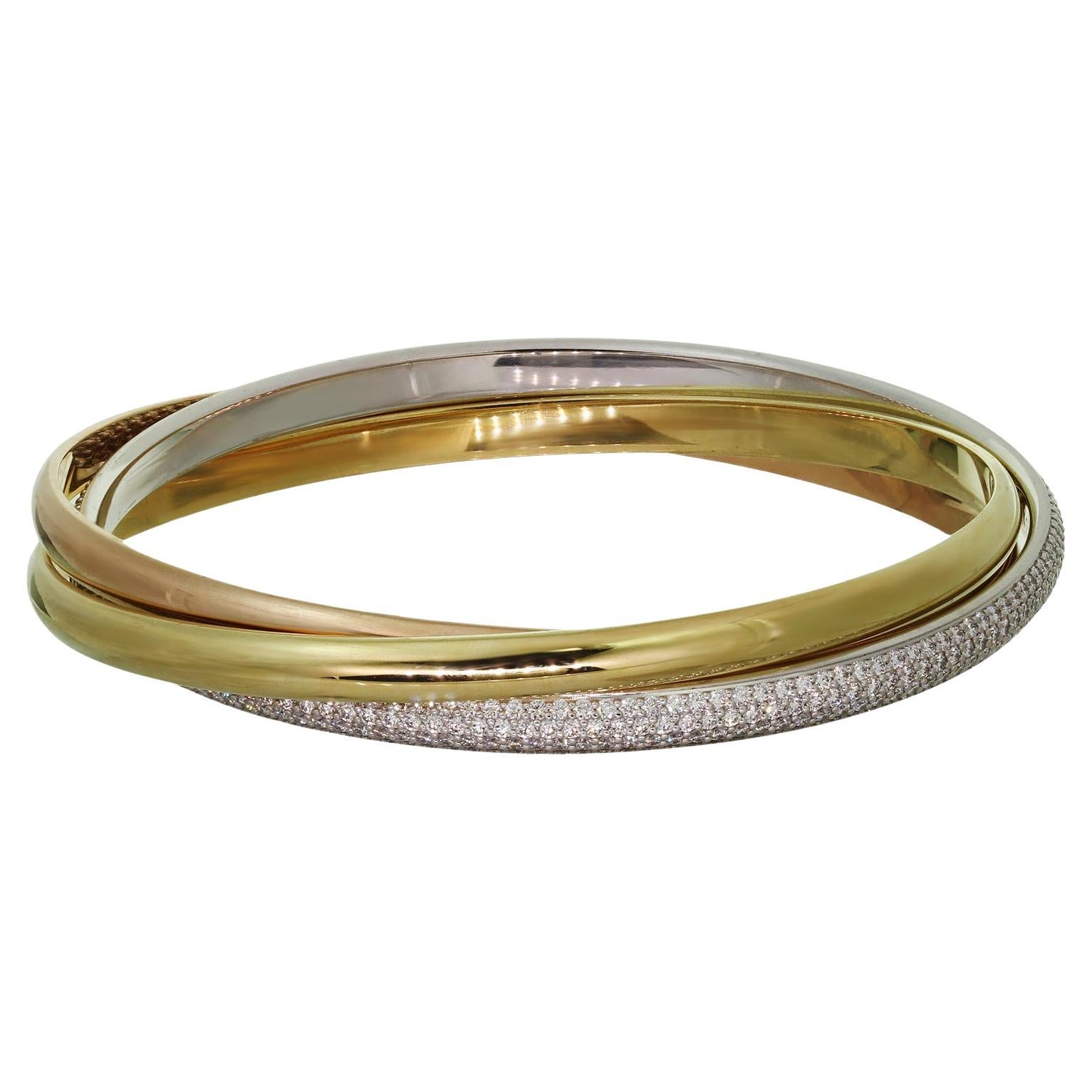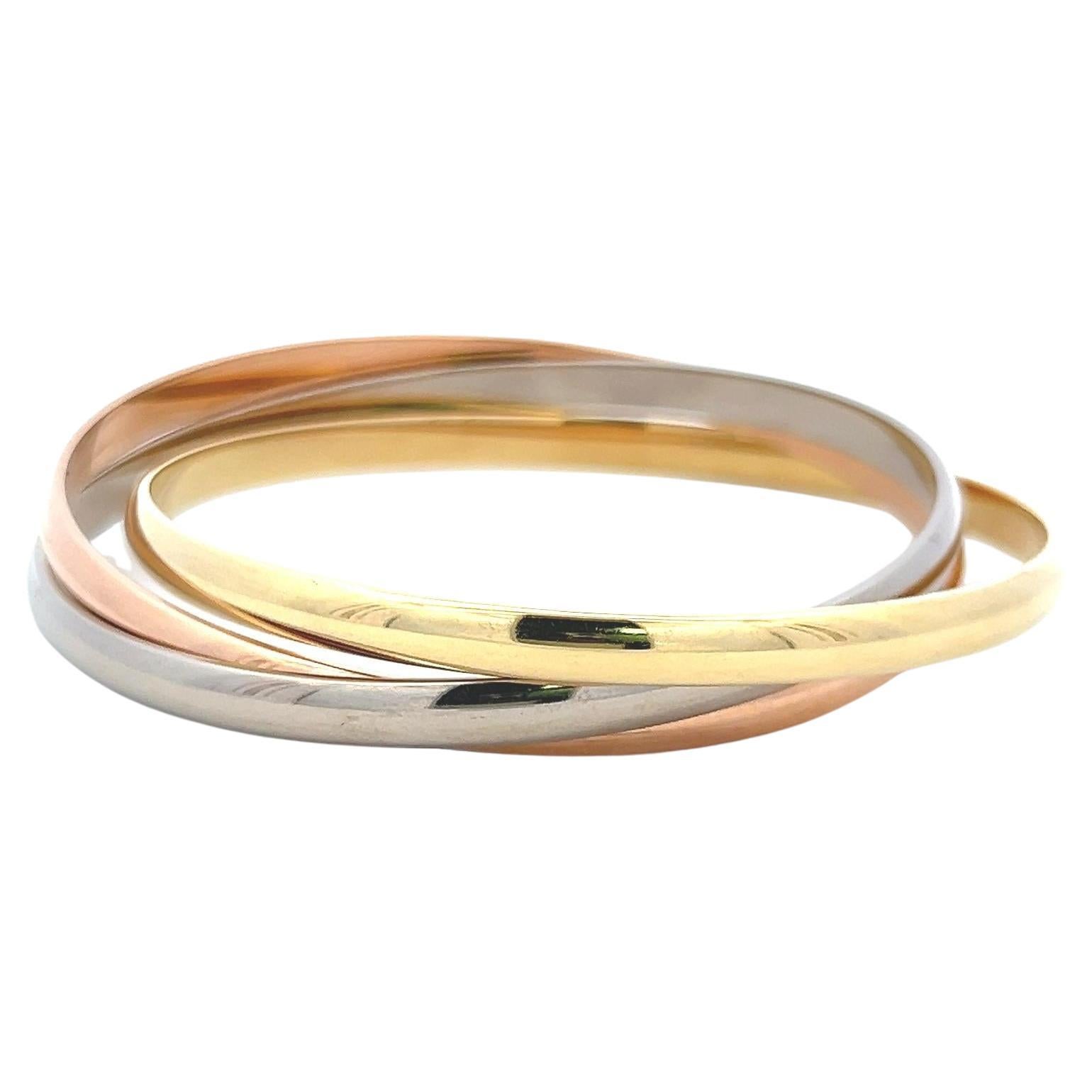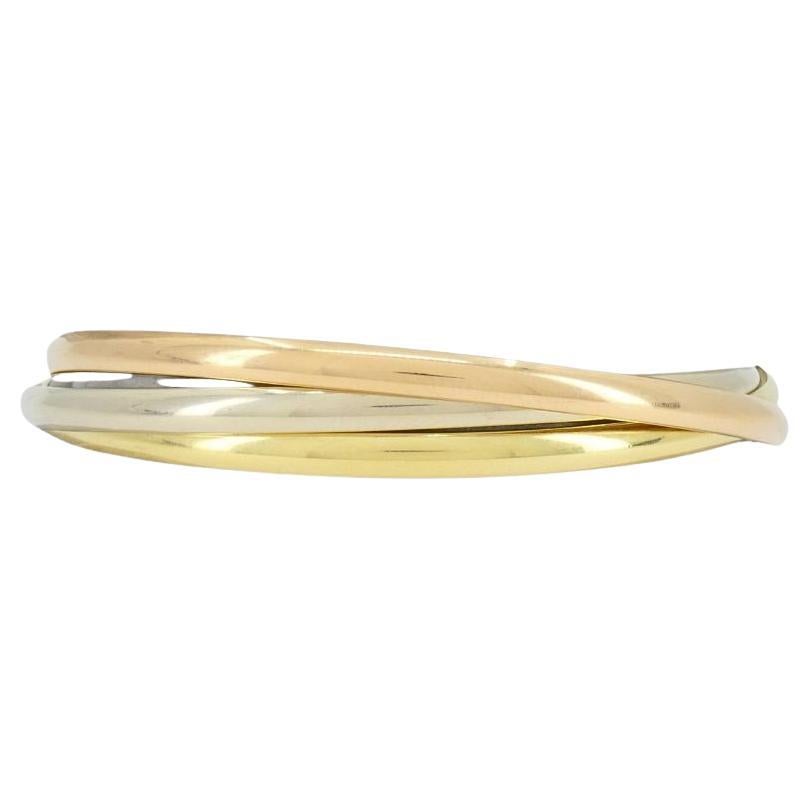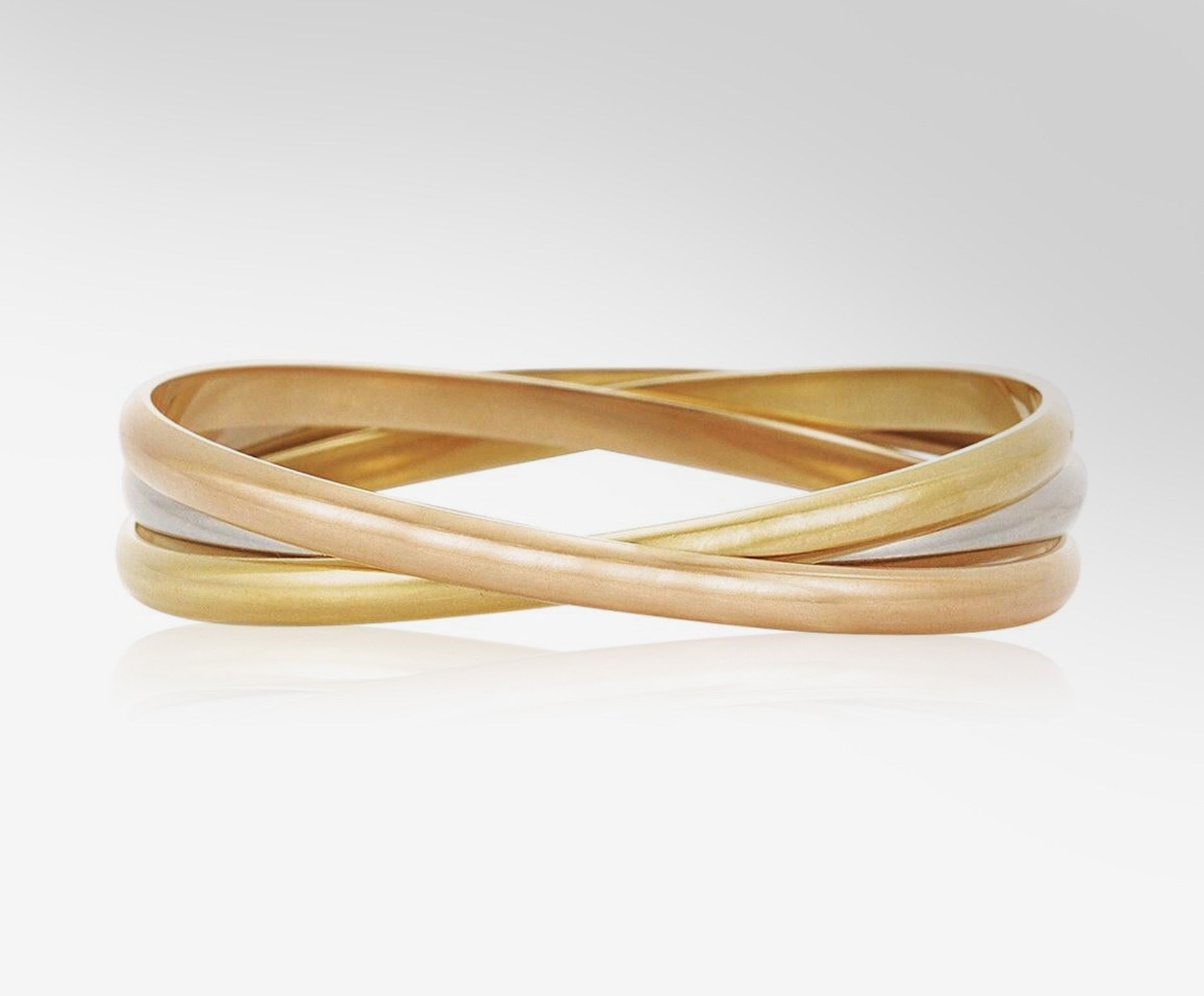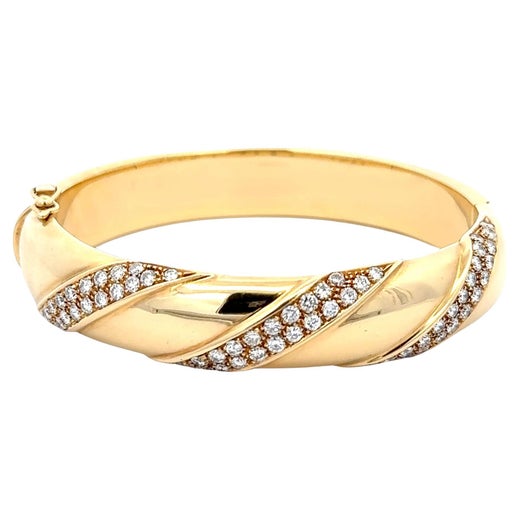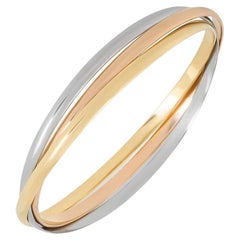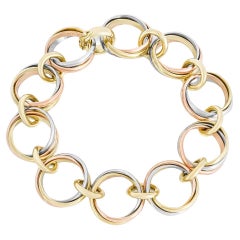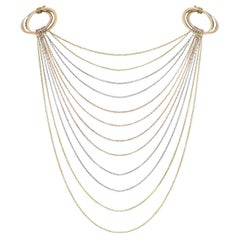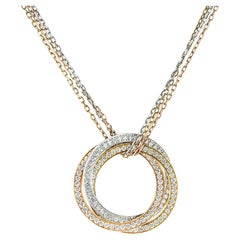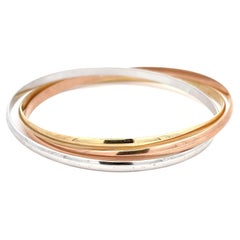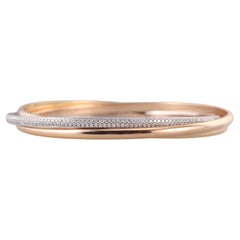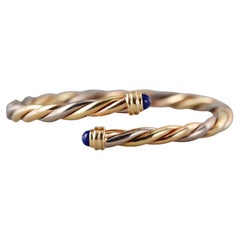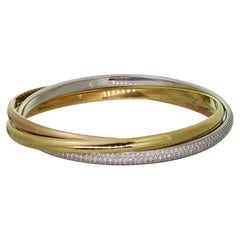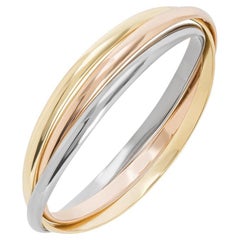
Cartier Tri-Colour Gold Trinity Bracelet B6013302
View Similar Items
Cartier Tri-Colour Gold Trinity Bracelet B6013302
About the Item
- Creator:
- Design:
- Metal:
- Weight:56.87 g
- Dimensions:Diameter: 7.09 in (180 mm)
- Place of Origin:
- Period:
- Date of Manufacture:21st century
- Condition:
- Seller Location:London, GB
- Reference Number:Seller: RD46211stDibs: LU590318856912
Trinity Bracelet
The famed French poet, novelist, artist and filmmaker Jean Cocteau was often photographed wearing two distinctive rings on his pinkie finger: tri-bands of overlapping hoops. Characterized by a Saturnian form involving three movable bands, the Trinity ring was designed in 1924 by Cocteau’s friend Louis Cartier (1875–1942), documented heartbreaker and grandson of Louis-François Cartier, who founded the renowned French luxury house. Cartier soon afterward debuted the distinctive “Trinity de Cartier” design to consumers, which, inspired by the ring, included the Trinity bracelet, a still-popular accessory in its classic simplicity for both men and women.
Notably, the Trinity bracelet was understated in its dearth of embellishments when it was introduced, and the collection offered an alternative to the Art Deco decadence that was then so pervasive in jewelry, including at Cartier.
Each of the Trinity bracelet’s interlaced loops was a different color, with yellow, white and pink 18-karat gold representing the entwining of fidelity, friendship and love. The three materials can also be interpreted as the stages of a relationship — from friendship to love’s passion and, finally, to the loyalty of fidelity. The Trinity design referenced a deep history of iconography related to close bonds, such as the “triquetra,” or “trinity knot,” a traditional symbol consisting of three interconnected leaves. The trinity knot was adopted long ago by the Celts and is incorporated frequently in Irish jewelry.
A model photographed for Vogue in 1925 donned a Trinity bracelet, while the image’s accompanying text celebrated jewelry that its editors deemed “amazingly chic and very moderate in price,” especially compared to Cartier’s elaborate diamond confections. Like the ring, the Trinity bracelet reflects Cartier’s technical skill in the way its three bands of precious metal elegantly overlap and rest smoothly on the skin like an embrace.
The Trinity collection was not the only collaboration between Cocteau and Cartier: When Belle weeps in Cocteau’s 1946 film Beauty and the Beast, her tears become diamonds, which were provided by Cartier during production. The luxury house paid tribute to Cocteau with the Trinity Sauvage bracelet, which incorporated a band with leopard spots that referenced the wallpaper in the study of the filmmaker’s Milly-la-Forêt home.
There have been many variations over the years — featuring diamonds, ceramic, pearls and more — and all maintain the harmonious balance that makes the Trinity designs timeless. Almost a century after Cartier designed the ring for his friend, the Trinity bracelet endures as a classic expression of everlasting friendship and love.
Cartier
For its extraordinary range of bracelets, watches, rings and other adornments, French luxury house Cartier is undeniably one of the most well known and internationally revered jewelers in the world among clients both existing and aspirational.
Perhaps 1847 was not the ideal time to open a new watchmaking and jewelry business, as the French Revolution was not kind to the aristocracy who could afford such luxuries. Nevertheless, it was the year Louis-François Cartier (1819–1904) — who was born into poverty — founded his eponymous empire, assuming control of the workshop of watchmaker Adolphe Picard, under whom he had previously been employed as an assistant. Of course, in the beginning, it was a relatively modest affair, but by the late 1850s, Cartier had its first royal client, Princess Mathilde Bonaparte, niece of Napoleon Bonaparte, who commissioned the jeweler to design brooches, earrings and other accessories.
Under the leadership of Louis-François’s son, Alfred, who took over in 1874, business boomed. Royalty around the world wore Cartier pieces, including Tsar Nicholas II of Russia, the Maharaja of Patiala and King Edward VII, who had 27 tiaras made by the jewelry house for his coronation in 1902 and issued Cartier a royal warrant in 1904. (Today, the British royal family still dons Cartier pieces; Kate Middleton, Duchess of Cambridge, regularly sports a Ballon Bleu de Cartier watch.)
Cartier’s golden years, however, began when Alfred introduced his three sons, Louis, Pierre and Jacques, to the business. The brothers expanded Cartier globally: Louis reigned in Paris, Pierre in New York and Jacques in London, ensuring their brand’s consistency at their branches across the world. The trio also brought in such talents as Charles Jacqueau and Jeanne Toussaint.
One of Cartier’s earliest major successes was the Santos de Cartier watch — one of the world's first modern wristwatches for men. (Previously, a large number of people were using only pocket watches.) Louis designed the timepiece in 1904 for his friend, popular Brazilian aviator Alberto Santos-Dumont, who wanted to be able to check the time more easily while flying.
Cartier’s other famous timepieces include the Tank watch, which was inspired by the linear form of military tanks during World War I, and the so-called mystery clocks. Invented by watchmaker and magician Jean-Eugène Robert-Houdin and later crafted exclusively for Cartier in the house’s workshop by watchmaker Maurice Couët, the mystery clocks were so named because the integration of glass dials on which the clocks’ hands would seemingly float as well as structures that are hidden away within the base give the illusion that they operate without machinery.
On the jewelry side of the business, Cartier’s internationally renowned offerings include the Tutti Frutti collection, which featured colorful carved gemstones inspired by Jacques’s trip to India and grew in popularity during the Art Deco years; the panthère motif, which has been incorporated into everything from brooches to rings; and the Love bracelet, a minimal, modernist locking bangle inspired by medieval chastity belts that transformed fine jewelry.
While the Cartier family sold the business following the death of Pierre in 1964, the brand continues to innovate today, renewing old hits and creating new masterpieces.
Find contemporary and vintage Cartier watches, engagement rings, necklaces and other accessories on 1stDibs.
More From This Seller
View All21st Century and Contemporary French Cuff Bracelets
Gold, 18k Gold, Rose Gold, White Gold, Yellow Gold
21st Century and Contemporary French Link Bracelets
Gold, 18k Gold, Yellow Gold
21st Century and Contemporary French Multi-Strand Necklaces
18k Gold, Rose Gold, White Gold, Yellow Gold
21st Century and Contemporary Swiss Pendant Necklaces
Diamond, Gold, 18k Gold, Rose Gold, White Gold, Yellow Gold
21st Century and Contemporary French Engagement Rings
Diamond, Yellow Gold, White Gold, Rose Gold, 18k Gold, Gold
21st Century and Contemporary Chain Bracelets
White Diamond, Yellow Diamond, Pink Diamond, 18k Gold, Rose Gold, White ...
You May Also Like
21st Century and Contemporary Bangles
Gold, 18k Gold, Rose Gold, White Gold, Yellow Gold
21st Century and Contemporary French Bangles
Diamond, Gold
1990s French Bangles
Lapis Lazuli, Gold
1990s Bangles
Diamond, Gold
20th Century Modern Bangles
18k Gold, Rose Gold, White Gold, Yellow Gold
21st Century and Contemporary French Bangles
Diamond, Gold
Recently Viewed
View AllRead More
These White Lotus Guests Have the Most Compelling Watches
Throughout the season, timepieces are clues to the characters' character.
How to Spot a Fake Cartier Love Bracelet
This iconic jewel has captured countless hearts with its elegant design and its amatory symbolism. Counterfeiters have taken note of the demand and created fake versions. If you’re looking for a genuine Cartier Love bracelet, it’s crucial to check all the elements for authenticity. Our guide will teach you the telltale traits of a knockoff.
